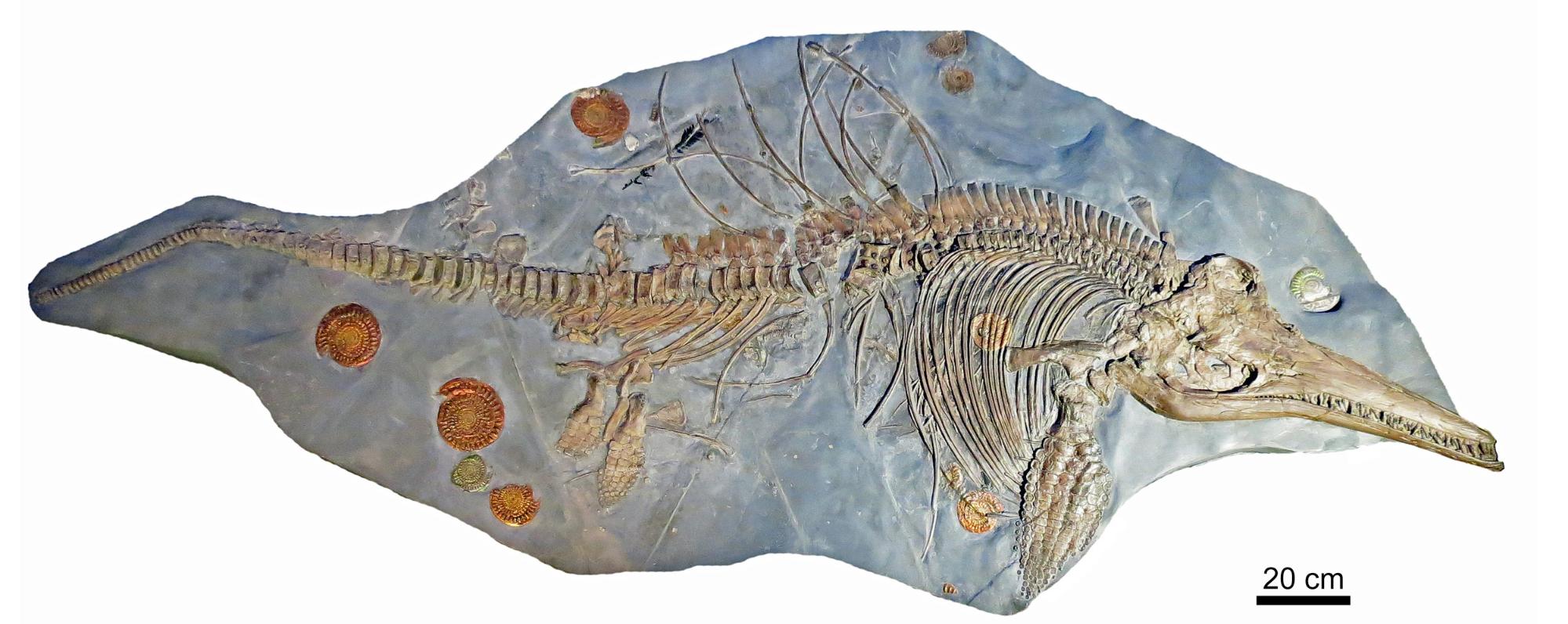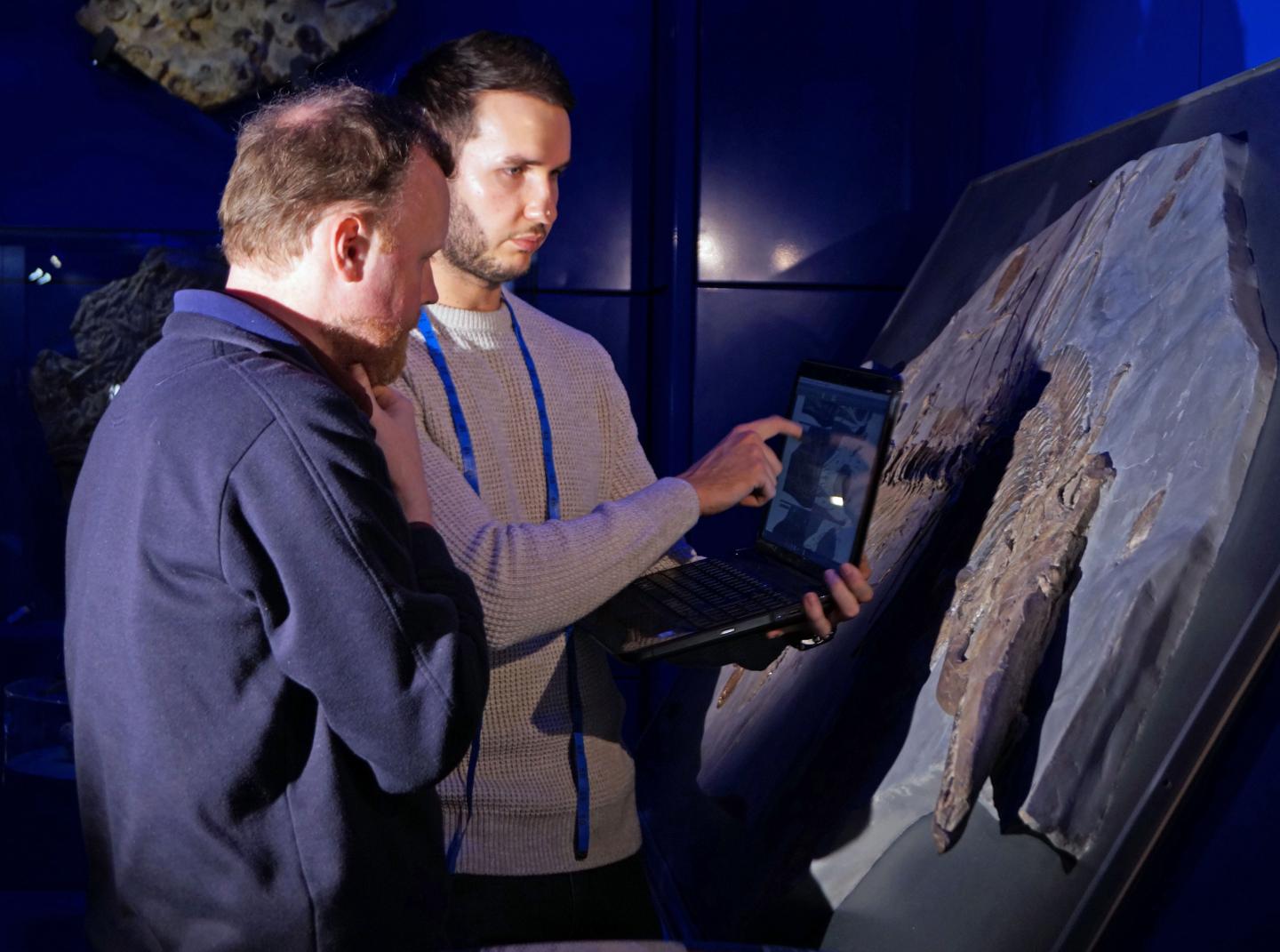A 200-Million-Year Old Display Fossil Turns Out to Be a Rare Pregnant Specimen
Credit to Author: Becky Ferriera| Date: Mon, 28 Aug 2017 13:00:00 +0000
Some 200 million years ago, a pregnant mother and her unborn progeny died in the early Jurassic seas, and became together entombed within the ocean floor. In the 1990s, their remains were recovered along the fossil-rich English Somerset coast, and eventually made their way to the Lower Saxony State Museum in Hannover, Germany, where they were put on display.
In August 2016, paleontologist Sven Sachs of the Bielefeld Natural History Museum came across the skeletal pair during a research visit to Hannover. He recognized that the remains belonged to the Ichthyosaurus genus, which is the namesake of the broader ichthyosaur group of extinct marine reptiles.
Ichthyosaurs were extremely successful predators that thrived in the Mesozoic oceans for over 160 million years during the age of dinosaurs. They died off around 90 million years ago, but left plentiful evidence of their long tenure on the planet in the fossil record.
Read More: After 160 Million Years of Success, Climate Change Killed Ichthyosaurs
Ichthyosaurus was an early member of this extended ichthyosaur family. At around five feet from snout to tail, on average, it was much smaller than many of its later relatives, which could grow to lengths of over 21 meters (70 feet).
When Sachs saw that the pregnant Ichthyosaurus on display at Lower Saxony State Museum was around twice the normal size of the genus, he was intrigued.
“I noticed that that the specimen was pretty big,” Sachs told me over the phone. “I knew that the genus Ichthyosaurus usually is between one and two meters long, so a three-meter long specimen was remarkable.”

The visible embryo in the mother’s belly—which included a seven-centimeter vertebral segment, a forefin, and some ribs—was also unusual. “Although there are certain kinds of ichthyosaurs which are known to have a lot of embryos, there are certain genera that hardly have any embryos preserved, and Ichthyosaurus is one of them,” Sachs told me.
Sachs reached out to paleontologist Dean Lomax, an ichthyosaur expert at the University of Manchester, to invite him to examine what was left of this unlucky expecting mother, and Lomax took him up on the offer in early 2017.
In a new paper published Monday in Acta Palaeontologica Polonica, Lomax and Sachs categorized the mother and unborn fetus as Ichthyosaurus somersetensis, a species that Lomax and his colleagues recently identified in an unrelated 2016 paper. The researchers also discovered that the tail on the display belonged to another ichthyosaur, but that didn’t change their estimate that this pregnant female would have been around 3.5 meters in length. This makes it the largest Ichthyosaurus ever found, and only the third example of an Ichthyosaurus specimen with an embryo.

“It amazes me that specimens such as this [the biggest] can still be ‘rediscovered’ in museum collections,” Lomax said in a statement. “You don’t necessarily have to go out in the field to make a new discovery.”
The find sheds new light on the early reproductive adaptations of the ichthyosaur group. “All three specimens of Ichthyosaurus that have an embryo only have one embryo,” Sachs told me. “The preliminary conclusion is that Ichthyosaurus, as a more basal genus, compared with later genera that had higher numbers of embryos, may only have had one embryo.”
That discovery is “new to science,” he said.
After 200 million years in the ground and years of phylogenetic limbo in museums, it seems like this ancient marine carnivore and her offspring have finally found their rightful place on the tree of life.
Get six of our favorite Motherboard stories every day by signing up for our newsletter.